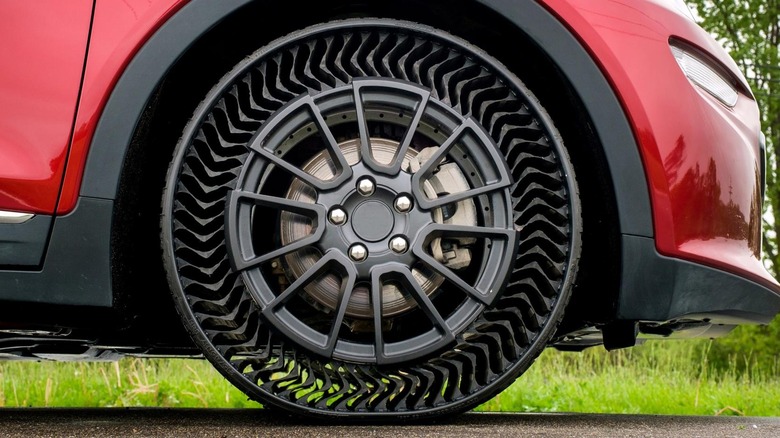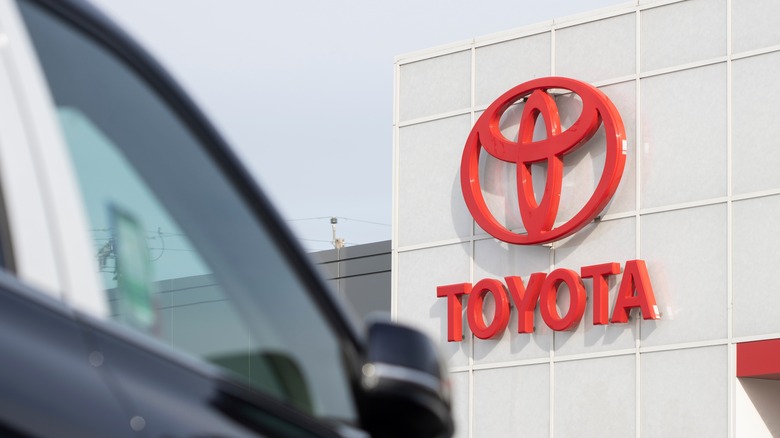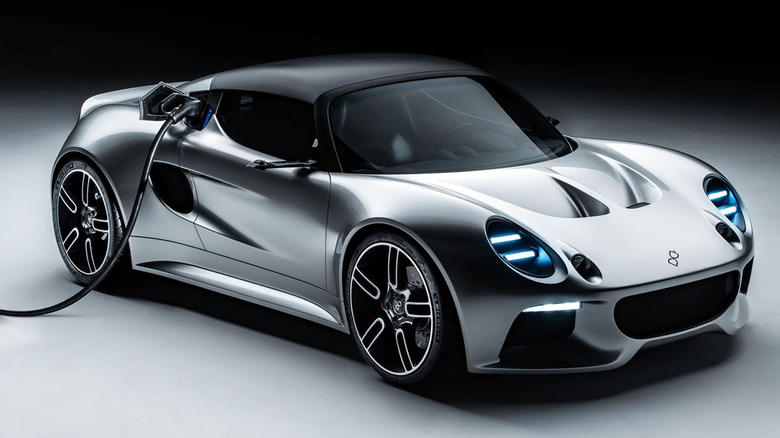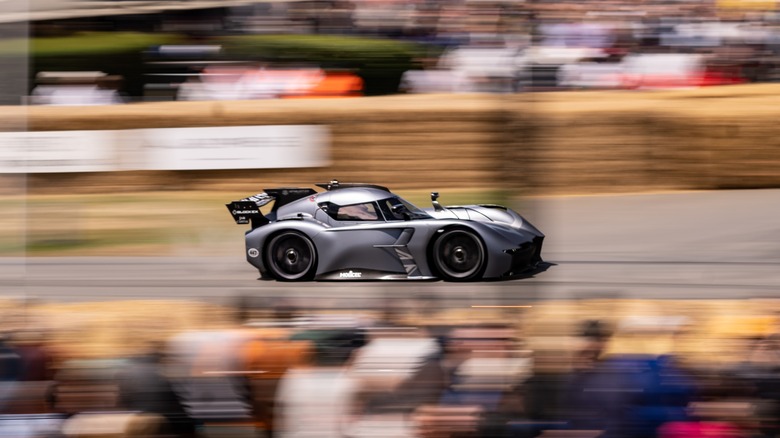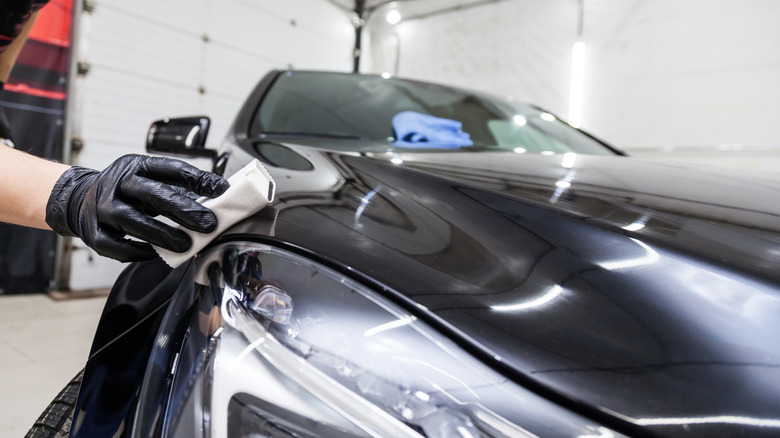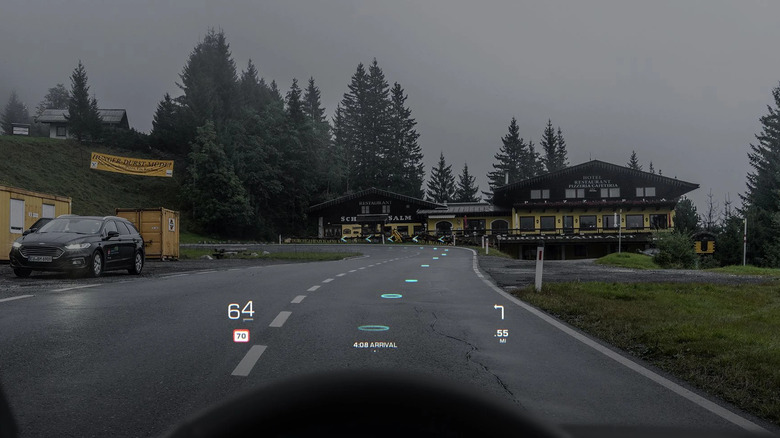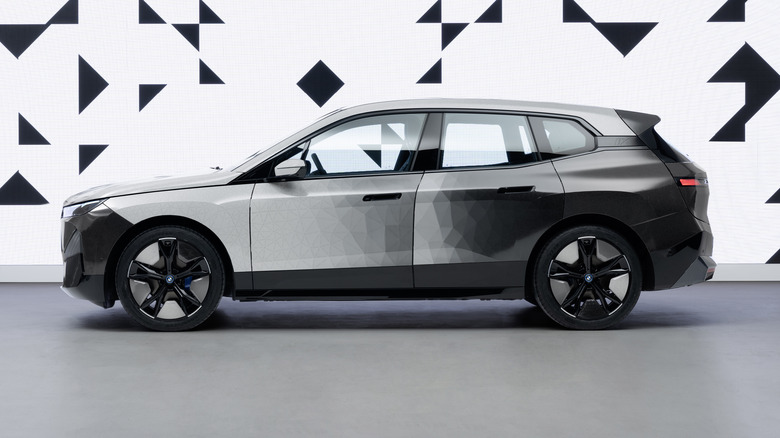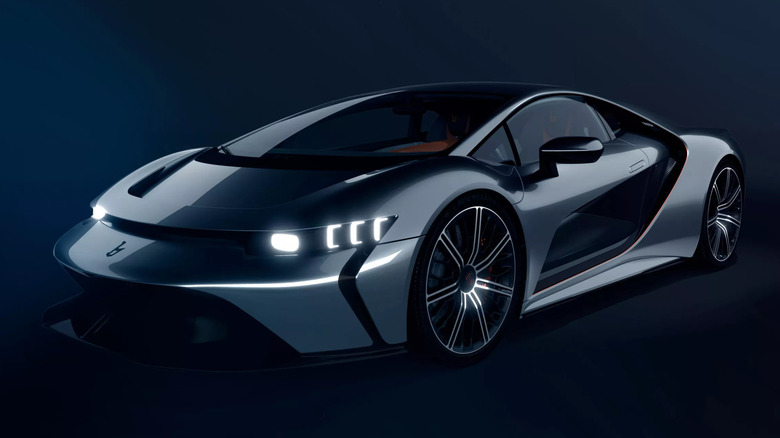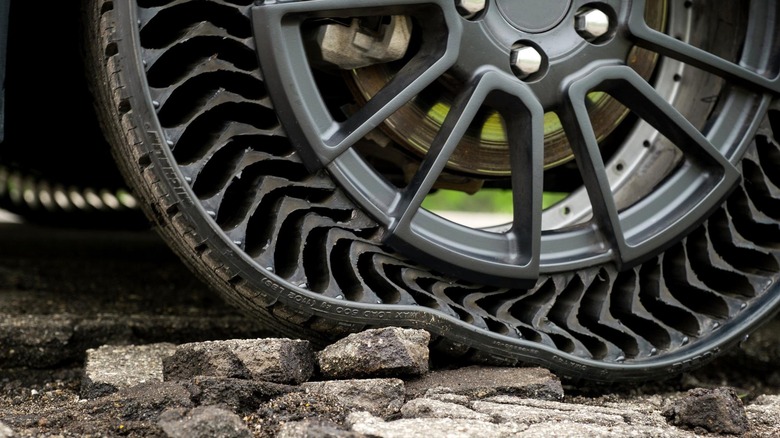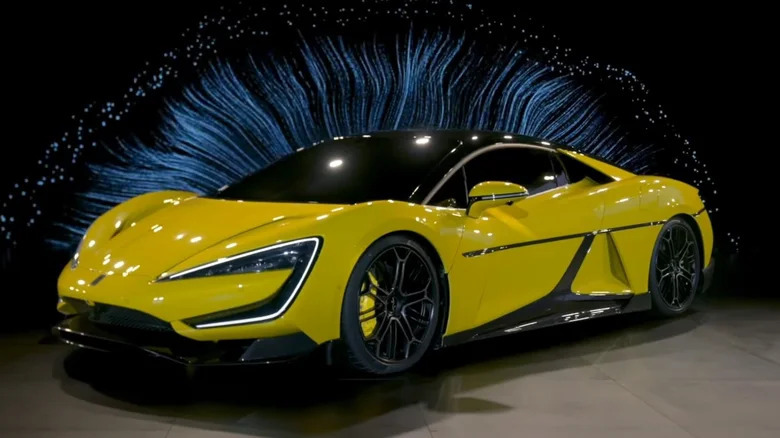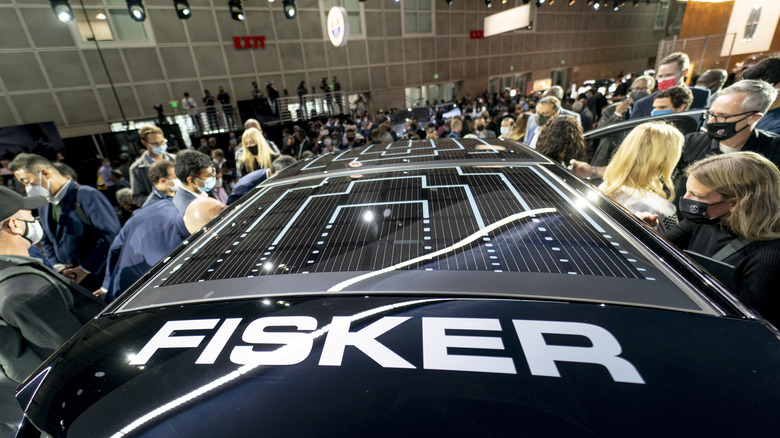11 Automotive Technologies That Could Change Driving Forever
To say that the automotive industry is changing rapidly would be an understatement — with the switch to EVs gathering pace and a slew of models set to launch in the next few years, almost every part of the industry is having to adapt to the new normal. With this unprecedented level of change, a number of groundbreaking automotive technologies have emerged, some of which have the potential to make a big difference in everyday driving.
Some of these technologies could help solve the biggest issues currently facing manufacturers, like convincing buyers that EVs are worth the switch or cleaning up the environmental footprint of their combustion-powered cars. Not every new piece of tech is a solution to a problem, though. In fact, some are simply an evolution of current production technology, albeit with a futuristic twist.
Most, although not all, of these emerging technologies are still in the development stage for now. They will likely stay that way for years yet, but here's a glimpse of what drivers in the future might have at their disposal.
Toyota's solid state battery technology
Electric cars are widely accepted as the future of the automotive industry, but there are still some key limitations with the current generation of battery technology that limits their appeal to consumers. Two of the biggest issues are range and charging times, but Toyota claims a breakthrough in its development of solid-state batteries could solve both of those issues in one. According to the brand, the new technology should reduce the weight and size of batteries by around 50% while significantly slashing costs.
The big question is, can the new tech be scaled up to meet industry demands? Toyota seems convinced, but this isn't the first time a supposed breakthrough battery technology has been announced only for it to be deemed unfeasible for production.
Nonetheless, if the tech does make it to production cars, the brand claims ranges of 745 miles and charging times of under 10 minutes would be possible. No definitive timeline has been given for the launch of these new batteries in production EVs, but the Japanese automaker previously reported that it was looking to bring solid-state batteries to customer cars as soon as 2025.
Nyobolt's six-minute EV charging times
Another automaker making bold claims about battery technology is Nyobolt, a British-based startup that recently unveiled a new car that it says can charge in just six minutes. Nyobolt doesn't rely on emerging tech like solid-state batteries, instead relying on optimizing the lithium-ion battery packs that are already the industry standard to achieve its ultrafast charging times. Its car packs a range of up to 155 miles, with a design based on the Lotus Elise. However, the company says that its battery technology could be just as easily applied to heavier vehicles like SUVs with larger battery packs and therefore longer ranges.
The car is set to enter production in 2024, and Nyobolt claims its batteries can survive more than 2,000 charging cycles without significant degradation. Assuming drivers travel around 100 miles between charges, rather than maxing out the car's range every time, that still gives a total expected lifespan of 200,000 miles.
Like any startup, Nyobolt has a tough road ahead to transfer its initial prototype technology into dealership-ready road cars. However, if its battery tech is as easily scalable as the company claims it is, it could have huge implications for the EV industry at large.
Sweden's electrified roads
Currently, the only way to charge an EV is through static charging stations, but in Sweden, a government transport agency is developing electrified roads to charge vehicles while they're on the move. The system is mostly focused on developing charging roads for trucks and commercial vehicles since they have to carry the heaviest battery packs to achieve a commercially viable range. However, passenger cars are also set to benefit from the network. The researchers behind the study claim that only around one-fourth of the nation's roads would have to be electrified for the system to be effective, with highways and major traffic routes being the most important.
A test route has already been selected for the first stretch to be electrified, and building work is set to start by 2025. The method of charging is still under debate -– one system proposes an overhead network of cables similar to the systems already in use in some European cities for buses and trams. However, passenger EVs would not be able to make use of this. A second method is to use a charging rail similar to what's used in certain metro systems, and a third system relies on inductive charging to wirelessly charge the cars.
It's that third system that is most likely to benefit everyday car drivers, with government data claiming that the system could reduce car battery sizes by up to 70% in urban areas. For now, though, it remains in the development stage.
McMurtry's record-breaking fan car
In July 2023, it was announced that the McMurtry Spéirling, the 1,000 horsepower fan car that smashed the all-time record at Goodwood in spectacular fashion in 2022, is now on sale with a price north of $1 million. It's limited to 100 units, and central to its unprecedented performance is the fan system that provides more than 4,400 lb of downforce, helping the car stick to the road like nothing else on the market. At one point, it was claimed that a road-going version was in the works –- at least one prototype is registered for UK road use -– but for now, the customer cars are strictly track-only.
It's not the first car to use fans to suck air from under the car to increase downforce: the Gordon Murray Automotive T.50 hypercar uses a similar system, and the tech's use in racing goes back to the Brabham BT46 F1 car of the '70s. However, the McMurtry takes the technology to new extremes with jaw-dropping performance figures.
During a test day at Silverstone, the Spéirling achieved a 1.4 second 0-60 mph time, 0-145 mph in 4.98 seconds, and a quarter mile in 7.97 seconds. For context, the Bugatti Chiron is nearly a second slower to 60 mph. While fan-assisted hypercars aren't going to make much difference to everyday drivers, the Spéirling could rewrite the rulebook for what high-end performance cars look like if a road version is unveiled in the coming years.
Llumar's self-healing paint protection film
Scratches, scrapes, and paint chips from everyday wear and tear are a fact of life for most car owners, but they no longer have to be. A cutting-edge paint protection film developed by Llumar can self-heal from scratches thanks to its unique glue, which remains liquid even after application. All it takes is a few minutes for the film to revert to its original state after being scratched, leaving no trace of the impact of rocks, debris, or anything else. It's not indestructible –- as soon as the underlying metal panel is damaged, the protective effect is gone –- but it's a remarkably effective solution to everyday paint damage.
It's also already commercially available in certain markets, although the specialist detailers qualified to work with the film will need access to Llumar's database to produce the correct quantity for any given model of car. The film is particularly worthwhile for drivers of high-end luxury or performance cars since their resale prices are most affected by paint chips and scratches. Really, though, it's a great investment for any driver looking to keep their car looking pristine long after it's left the dealership.
WayRay's augmented-reality head-up displays
Head-up displays are a convenient way for drivers to receive information and track things like speed and directions without having to take their eyes off the road. WayRay is already a leading provider of head-up display technology, with investments from the likes of Porsche and Hyundai, but it has bold plans for the next generation of AR displays. It's been exploring the idea of adding information on points of interest during journeys, promotions from stores in the area, or even in-car ads on Uber rides.
The company claims that it would be beneficial for both taxis and passengers, with the ads helping to pay for a portion of the fare to make the ride cheaper. While that element of the technology is sure to divide people, the added information about navigation or local points of interest will likely sound much more appealing to most drivers. Like any cutting-edge innovation, it remains to be seen how much of this prototype technology actually makes its way onto the roads.
BMW's color-changing body panels
Unveiled at CES 2022, BMW's new E Ink paper gives its cars the ability to change color, although only grayscale colors were possible at the initial demonstration. The biggest benefit the brand touted at the time was heat efficiency -– on sunny days, a car could turn white to deflect the most heat, saving energy on air conditioning, while on colder days, black paint would help absorb heat better.
Since then, the development team behind the idea has been working on a diverse array of uses, with team lead Stella Clarke telling SlashGear that a number of internal departments were exploring the idea of using the e-paper in various parts of the cabin, specifically for interior controls.
The technology now also supports color, and there are plans to make it sprayable for easy application onto cars rather than relying on cutting individual panels. The full range of uses for the tech might still be in development, but the idea seems promising, and Clarke and her team are convinced that production cars will be incorporating the color-changing e-paper sooner than you might think.
Bertone's hypercar fueled on plastic waste
Legendary Italian design house Bertone was recently bought out by new investors, who unveiled the GB110 hypercar at the end of 2022. It's generally pretty standard fare for this sort of car –- a sleek design, 1,100 horsepower on tap, and limited production numbers.
However, there's one very unique difference with the GB110 — it runs on fuel from plastic waste. Thanks to a partnership with Select Fuel, the car's combustion engine is designed to use low-carbon fuel, an alternative technology to battery electric vehicles that can serve existing ICE vehicles rather than relying on manufacturing new vehicles to reduce emissions.
Select Fuels takes plastic waste in various forms and converts it back into petrochemical fuel, which in turn can be used to fill a car's tank at a gas station, just like regular gasoline or diesel. The idea is to eventually scale up the process, making the fuel usable for any gas-powered passenger car and creating a demand for plastic waste in the process. Turning old plastic from a problem into a commodity has huge potential, but for now, it remains a relatively small-scale operation, with Bertone being one of the earliest partners in the project.
Michelin's airless car tires
Unlike most other areas of automotive technology, current car tires have remained largely the same since their inception. Their air-filled structure makes them susceptible to punctures and blowouts, but Michelin's airless tires have no such problems. Several tire manufacturers are currently testing prototypes of the tire tech, but Michelin is so far the only manufacturer to have examples on the road. In early 2023, the first airless tires were fitted to a number of DHL delivery vehicles in Singapore, with the aim of giving Michelin more data on real-world tire wear before releasing them to customers.
The unique flexible innards of the tire are made of glass fiber-reinforced plastic and are able to drive over sharp spikes and rough terrain without the risk of punctures. Michelin claims the technology is nearly ready for passenger vehicles and recently conducted successful high-speed tests to establish the tires' durability at the request of several European police forces. However, there has been no confirmation of when or where the tires might become publicly available.
BYD's jumping car suspension
BYD unveiled its latest technological development, a fully adjustable car suspension, in a very whimsical way when it took a bright yellow example of its Yangwang U9 supercar and made it dance, jumping off the ground and riding on three wheels. However, the real-world applications for the tech are more useful than the launch video might suggest.
Being able to adjust car suspension on the fly could help cars with low ride heights to clear obstacles, bumps, and potholes in the road, reducing the risk of damaging them on rougher roads without compromising on low-slung driving dynamics. Aftermarket systems like this already exist for modified cars, but so far, the tech remains rare on stock passenger cars.
Likewise, drivers of larger vehicles like SUVs would be able to enjoy the aerodynamic benefits associated with lower ride height, improving efficiency without sacrificing their car's all-terrain capability. Driving with a wheel missing could also come in very useful in the case of a flat tire –- assuming Michelin hasn't convinced everyone to buy airless tires by then, of course. The hydraulic suspension system responsible for the U9 supercar's dancing display will be debuted in production form in the upcoming Yangwang U8 SUV, but so far, there are no plans for any similar system on cars sold outside of China.
Fisker's solar panel car roof
If the company's estimates are to be believed, then the solar panels on the top-spec Fisker Ocean SUV are set to be the most efficient in the car industry. Fisker claims they could provide up to 1,500 miles a year of additional range in sunny climates, with the potential to double that figure as development progresses.
The average American drives 13,476 miles a year, so the panel on the current Ocean would provide just over 10% of that range at present. However, if the technology is improved in the way Fisker envisions, a much larger percentage of total miles could be accounted for without the need to plug in.
It's worth noting that other manufacturers have tried to implement solar roofs before with very limited success. To be effective at adding range, Fisker's system would have to be significantly more efficient than its rivals' efforts. Nonetheless, if the panels are as effective as Fisker claims them to be, then solar roofs could become a lot more common across EVs of the future.
